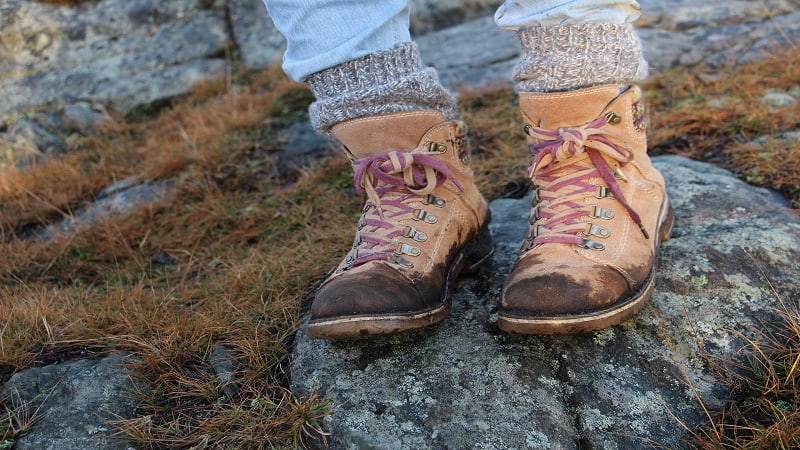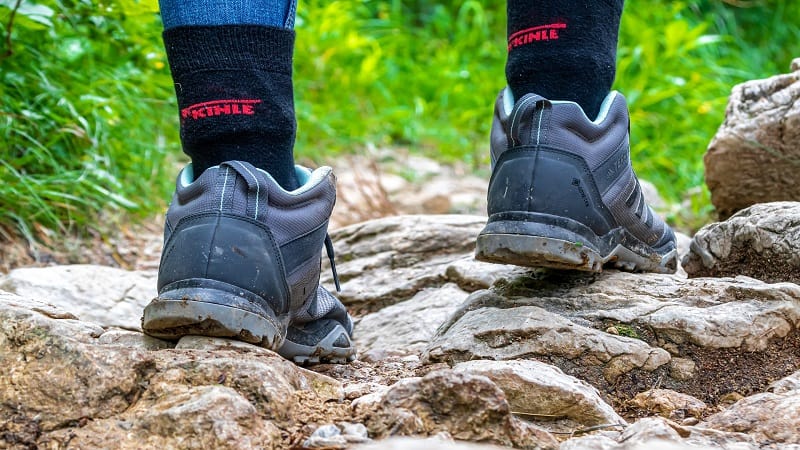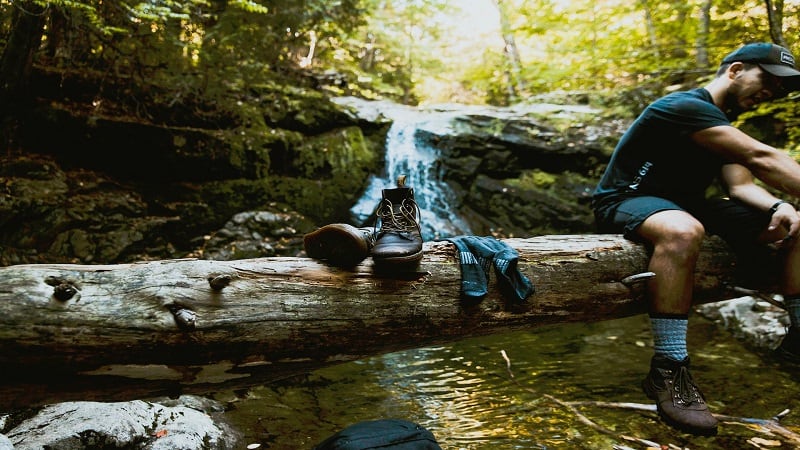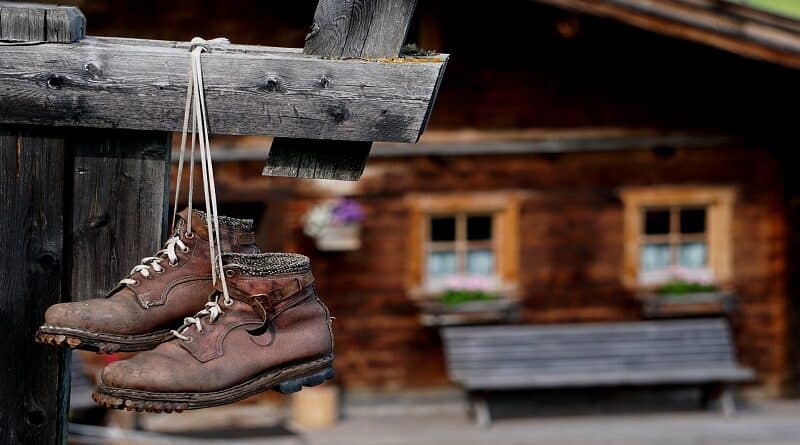Do I Really Need Extra Ankle Support for Hiking?
Many people don’t realize that hiking can be hard on your ankles. This is especially true if you’re a new hiker and not used to hiking on uneven terrain.
There’s little worse than slip-sliding on loose rocks on a steep downhill stretch of hiking trail or awkwardly stepping on a knotted tree root. Ouch.

A 2014 medical study found that there was no real difference in ankle impact on the trails between high-top boots and low-cut trail runners.
I recently switched to trail runners, but I keep my eyes on incline and terrain to help avoid twisted ankles, which can happen regardless of style of trail shoes.
Is Hiking Bad for Ankles?
People also ask whether hiking is bad for ankles. It’s not bad for ankles, but you may be more likely to hurt your ankles on a trail than in your kitchen.
On a flat surface with few obstacles to manage, you’re less likely to twist or sprain an ankle. Ankles are more vulnerable on uneven surfaces and terrain.
Ankles can be more prone to injury on hiking trails for a variety of reasons, like uneven and loose trail surfaces. Also, tiredness and lack of focus.
When you’re tired and not paying attention, it can be easy to roll or sprain an ankle. I find this to be especially true late in a hike when I’m eager to be done.
I’m so focused on reaching the trailhead that I’m not as focused as I need to be on safely navigating the hiking trail.
How Do I Support Ankles While Hiking?

Despite a lack of consensus on the impact of hiking on ankles, I do prefer to be as careful and prepared as I can on the hiking trails.
I wear trail runners for hiking, which offer stability and traction, but also more freedom of movement. They’re also a lot better than tennis shoes or flip-flops.
Supporting your ankles starts with wearing proper footwear. Flip-flops are not designed for hiking trails. Yet, I’ve seen them worn more than a few times.
If you have stiff or weak ankles, however, you can wear an ankle brace for hiking to provide added support and reduce stress placed on your ankles.
This can help prevent ankles from getting sore. Ankle supports can also help prevent you from rolling or twisting an ankle.
In addition, it’s wise to hike with trekking poles. With proper use, poles can transfer weight to your upper body. As in, away from feet, ankles and knees.
Poles can help with balance and mitigate ill-placed steps on leaves and snow-covered rocks. They can steady you as you navigate water crossings and obstacles.
Do Hiking Boots Provide Ankle Support?
Hiking boots can provide ankle support. In fact, hiking boots are a popular choice for ankle support while hiking on rugged trails and uneven terrain.
Boots made for hiking can provide stability and help prevent ankle injuries. However, not all hiking boots have good ankle support.
If you’re looking for a pair of hiking boots with good ankle support, a sturdy boot made from a thick leather may provide extra ankle support.
It’s not a guarantee that if you wear hiking boots you will not twist, sprain or roll your ankle. These injuries happen when wearing boots and trail runners.
How Do I Strengthen My Ankles?

Strengthening your ankles is one way to help prevent ankle injuries when hiking. Isolated ankle strengthening and balance exercises are good ideas.
The ankle is a weight-bearing joint. These exercises focus on the ankles to strengthen them. Balance exercises are often recommended for hikers.
The better balance you can maintain, the less likely you are to take a spill on the trails, and by association, the less likely you are to have an ankle injury.
Next Step Orthopedics shares six exercises to help strengthen ankles to avoid injury, including resistance band exercises and ankle circles.
How Do I Treat an Ankle Injury on a Hike?
The American Hiking Society notes that symptoms of a sprained ankle can include swelling, bruising, ankle tenderness and pain with movement.
They want hikers to use the acronym R-I-C-E-S when treating a sprained ankle. This stands for Rest, Ice, Compression, Elevation and Stabilization.
Rest: Sit down, take the stress off of the ankle to prevent further injury.
Ice: Ice will reduce swelling and ease pain. Apply ice for up to 20 minutes three to four times a day. No ice? Look to snow or a cold mountain stream.
Compression: Use a compression wrap to wrap the ankle. Start at the toes and move up the foot, over the ankle. The wrap should be comfortably tight.
Elevation: Elevate the injured ankle above the heart to help reduce swelling.
Stabilization: Apply tape or a splint to the injured ankle to reduce further injury, especially if you need to continue hiking to your vehicle.
Continue R-I-C-E-S for 72 hours following the injury. Take an anti-inflammatory, like ibuprofen, up to three times per day.
Wrap-Up Notes

Reducing your chances of ankle injury begins with proper footwear, whether boots or shoes made for hiking. Or, at the very least, no flip-flops.
If you have weak or tight ankles, consider an ankle brace for hiking to provide added support. Ankle strengthening exercises are also a good idea.
If you roll or twist your ankle while hiking, take care of the injury as soon as possible. You really don’t want to try to walk off the ankle injury.
Pay heed to the American Hiking Society’s acronym R-I-C-E-S as it relates to treating ankle injuries: Rest, Ice, Compression, Elevation and Stabilization.
This way you can reduce the pain and swelling of the ankle injury early on before it takes a turn and requires medical assistance, like an EMT rescue.
Disclaimer: The words in this blog, and in any linked materials, are not intended as medical advice. Always seek the guidance of your doctor with any questions regarding your health or a medical condition.

Erin Gifford has completed more than 300 hikes in Virginia. She is also the author of three hiking guidebooks from Falcon Guides. Need help finding a hike? Check out the Trail Finder feature or send Erin an email at [email protected].




